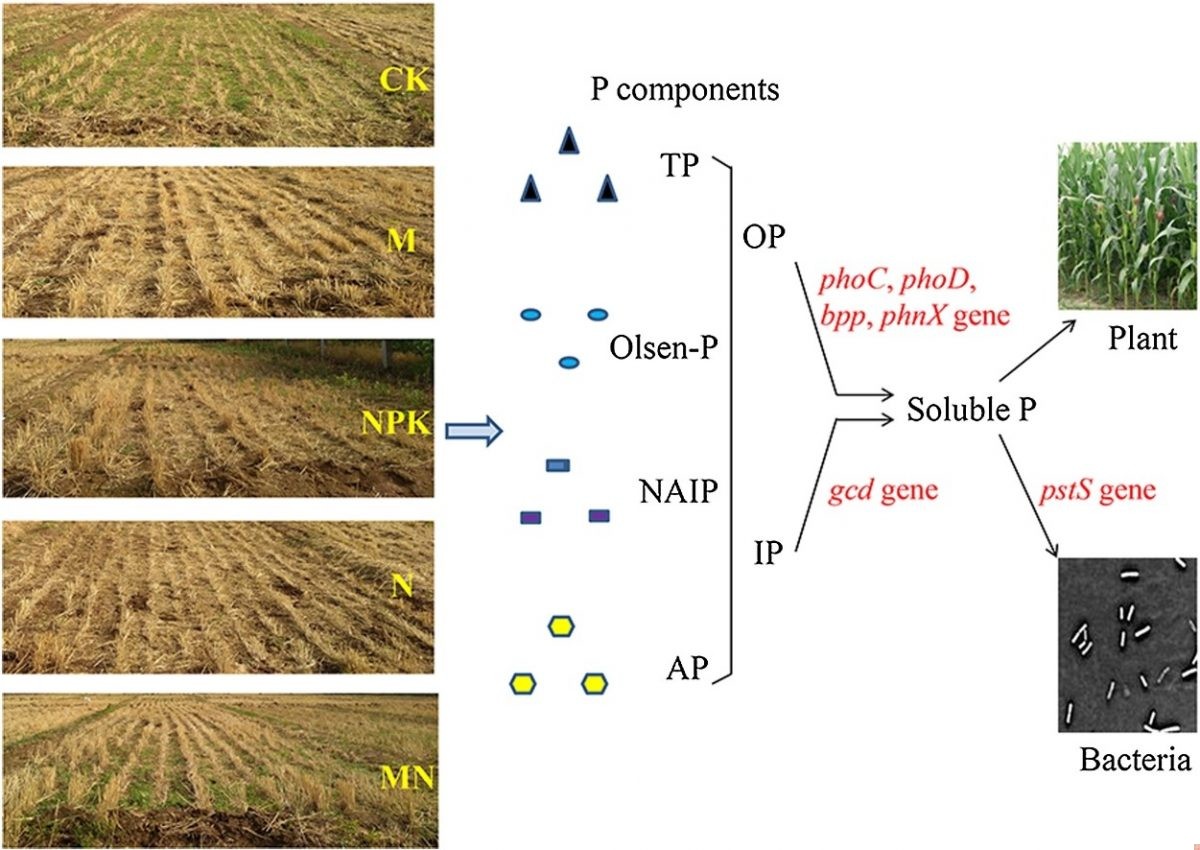Abstract
Fertilization could promote phosphorus (P) cycling in soil; however, it is unclear how long-term fertilization regimes affect P-cycling-related microbial communities in different soil aggregates. In this study, we compiled promising strategies to evaluate the effect of 40-year long-term fertilization treatments on the P-cycling-related bacterial communities associated with different soil aggregates, of which P fraction and physicochemical properties were also measured. We found that both organic and mineral fertilization treatments increased the proportion of silt + clay (< 53 μm) and decreased the proportion of macroaggregate (250–2000 μm). Organic fertilization increased microaggregate (53–250 μm) proportion while mineral fertilization resulted in the opposite. The abundances of phoC-, phoD-, phnX-, gcd-, and pstS-harboring bacteria increased in silt + clay in five fertilization treatments, while bpp-harboring bacterial abundance increased in microaggregate applied with nitrogen chemical fertilizer and nitrogen with combined manure fertilizer. Phytase activity was higher in macroaggregate in no fertilizer and mineral fertilization treatments, while phosphatase activity was higher in silt + clay in five fertilization treatments. Besides, fertilization significantly affected P fraction, with higher proportions of inorganic P, organic P, non-apatite inorganic P, and apatite inorganic P in silt + clay. For P-cycling-related bacterial community composition, 43.09% of the variation explained by fertilization treatment and aggregate fractionation, 73.92% of the variation explained by soil physicochemical properties and P fraction were found. Besides, P components especially organic P, non-apatite inorganic P, and labile P presented great effects on P-cycling-related bacterial community composition. To our knowledge, our findings first suggest that silt + clay is beneficial to enrich P-cycling-related bacteria, nutrient-driven aggregate fractionation and P fraction via fertilization treatments can shape P-cycling-related bacterial community composition.
Keywords
Long-term fertilization regime, Aggregate fractionation, P fraction, Physicochemical properties, P-cycling-related bacteria, Bacterial community composition
